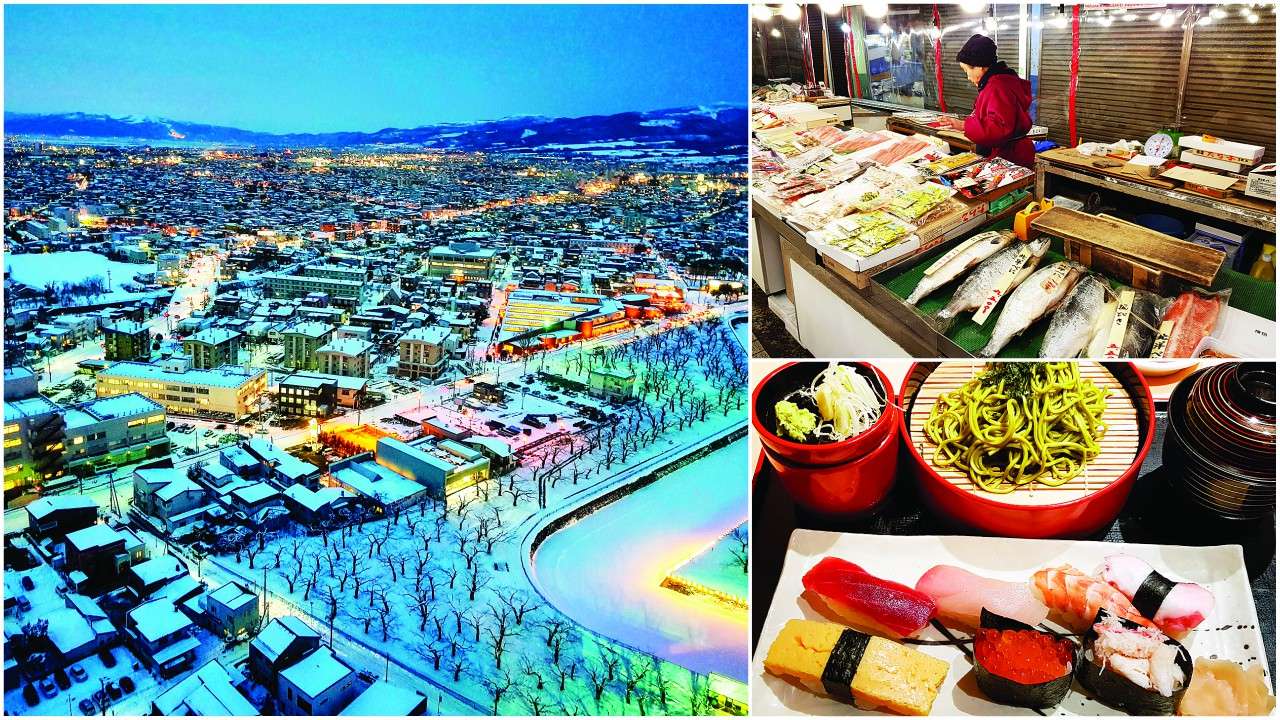
Of all my moments in Hokkaido, nothing quite matched the thrill of enjoying an ice cream in the middle of a gentle snowstorm. Snowflakes fell into my cup as the temperatures dropped to – 12 °C.
Despite its spectacular vistas and winter sports options, Japan's northernmost island wasn't high on traveller hotlists until the 2010s. The region has now emerged as one of Asia's genuine culinary hubs for it's local produce – Hokkaido's biggest ace.
It wasn't just cheap thrills that prompted the ice cream in sub-zero temperatures. Hokkaido's dairy produce is top class and its soft-serve ice creams are probably the best you'll find in any continent. Locals say flavour options are seasonal, but classics like the matcha and black sesame are available around the year. When I went to one of Sapporo's most popular casual dining spaces, Soup Curry King, to try out the region's contribution to Japan's culinary tapestry, the soup curry, discovering the matcha and Yuzu Lassis (spelt lassie on the menu) was the true victory. Creamy and sinful!
The soup on the other hand, isn't just the perfect antidote for the Hokkaido winter, but also an answer for Indian tourists, who sometimes struggle with Japan's piquant flavours and perceived lack of vegetarian options. The quail eggs and the yellow colour might remind you of laksa, except this curry doesn't feature coconut milk, but is dominated by the flavour of Japanese curry powder that Indians might find comforting. You can tweak the spice levels and play around with what gets tossed into your curry. There are a few vegetarian options too.
Skiing and winter sports enthusiasts had discovered Hokkaido much before foodies. Sapporo, Hokkaido's largest city, played host to the Winter Olympics back in 1972 – the first time they were held outside Europe or North America. The Okurayama Ski Jump that was built for it provides a dramatic backdrop for one of the city's special dining venues – Genghis Khan. There's no record to prove that Genghis Khan's global conquests ever took him over the oceans and to Hokkaido, but the region's famous grilled meat dishes, which locals call jingisukan, pays tribute. They believe its origin dates back to a time when Mongolian soldiers used to cook their meat by placing it atop their helmets and then placing their helmets over open fire.
Don't go to Genghis Khan looking for helmets though. What you will find is a convex metal skillet placed at the centre of each table that lets you enjoy a cool DIY grilled-meat meal. A small knob of meat fat is all you need to grease the skillet and then keep adding meats (at the centre) and veggies (on the sides).
Panoramic views, especially stunning at night, are a given, not just in Sapporo, but even at Hakodate, one of the major cities in Hokkaido that lies at the Southern end.
Sapporo's DIY experience is no match for the one at Hakodate where, at the market, seafood stalls and restaurants rub shoulders. This coastal city is best known for its squid – you can fish for it in a large tank at the market and watch it quickly transform into delicious sashimi in front of your eyes – engaging and well worth its Rs 500 price tag.
That said, for me, Sapporo's seafood produce is arguably the best in Japan – the sushi and sashimi doesn't get better than this. Aside from a wide range of sushi bars, in Sapporo and Otaru, you can also indulge in other quintessential Japanese culinary experiences like heading to an Izakaya, a typical after-hours Japanese bar and restaurant, where co-workers bond over fine cuisine, sake and office banter.
After a four-day culinary journey through Hokkaido, it's easy to fathom why this island is high on the wishlists of evolved travellers. If Melbourne attracts tourists with its rich produce and global cuisine, thanks to one of the world's most multicultural populations, Hokkaido is largely about fine local produce and inimitable, local culinary traditions.
Japan Airlines operates direct flights from Delhi to Tokyo with a seamless connection to Sapporo or Hakodate. Both the places have an efficient public transportation system; cab rides, however, are very expensive.
Cost: Wholesome meals are available for as low as Rs 500 and 4-star hotel rooms for about Rs 8,000/night.